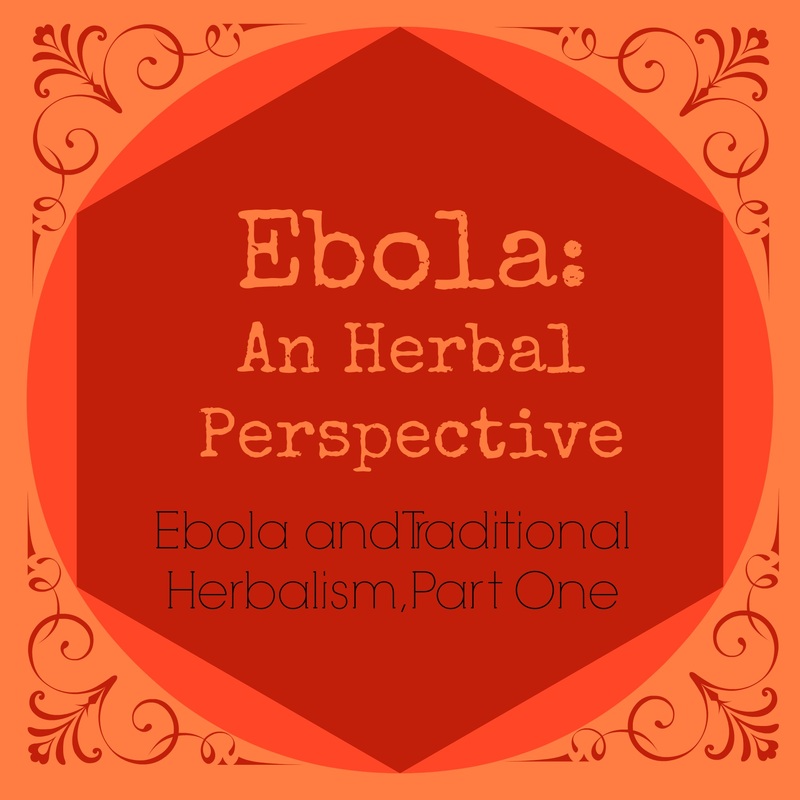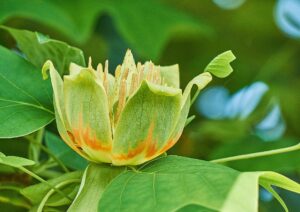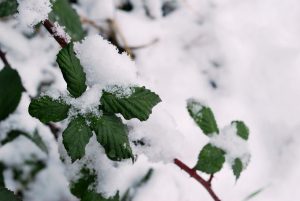Links contained in this post and elsewhere on my website may include affiliate links. When you make a purchase through these links, I earn a commission at no additional cost to you. I only link to products and services that I love - and that I think you will love, too!
Much of the chatter I have been hearing over the last week or so in Herbal Preparedness circles concerns this year’s Ebola outbreak in Africa. A particularly virulent strain has taken hold, and the disease itself is gruesome enough to have captured the public attention (and imagination) despite a relatively small number of deaths (compared to, say, yearly deaths from cancer or car accidents). Plenty of people are either downplaying the outbreak or over blowing it. I’m not here to do either. I’m here to discuss something I found rather interesting when I first started reading about Ebola: it sounded familiar. Finally, I realized why. I had read about a formula in my herbalism textbooks that matched the symptom picture of Ebola very closely- it was one traditionally used for Blood Heat disorders (what we now call hemorrhagic fevers, of which Ebola is but one of several.)
For all of my fellow preppers and worry warts out there, I would like to emphasize that at the moment the virus appears to be reasonable easy to contain AS LONG AS strict hygiene and quarantine protocols are followed. This can be extremely difficult in other parts of the world due to shortages of protective medical gear like masks and gloves, poor hospital hygiene and bare-bones clinical settings, social customs (burial rites that involve washing bodies before intermet) mistrust of foreign aid workers, and other resource based issues such as difficulties screening travelers and enforcing quarantine zones. So, to be truly prepared for yourself and loved ones, consider whether or not you know anything about quarantine and the type of medical grade hygiene that would be required in the event of a widespread outbreak. If anything, start there before you even begin to consider herbs.
That being said, most people are wondering what herbs would be most effective to support the immune system in the event of a widespread outbreak. I’ve seen several articles that are nothing more than long lists of herbs with *potential* antiviral activity. Might this help? Right now, the best doctors can do is quarantine patients as much as possible and provide supportive care (such as IV fluids) and hope that the body pulls through on its own. So, in herbal circles, the thinking goes, any help is good help. But if we look a little deeper we become aware of a major flaw with this line of thinking.
One concern we should be having with providing herbs that are “antiviral” and may stimulate the immune system (which is the way most herbs in this category work) is that currently there’s no way to know how or if the body would even respond to immune stimulating herbs once the disease is fully underway. Unfortunately, although scientists have been able to discover what portions of the immune system are targeted by Ebola, the parts of the immune system that protect against the virus and lead to recovery haven’t been sorted out yet. So there’s no way to know which herbs, if any, would activate the correct portions of the immune system to help the body’s defenses.
The other problem with assuming that immune stimulating herbs are the correct choice in an Ebola outbreak is that Ebola has a particularly tricky way of hijacking the host immune system, so boosting immunity may be a very poor choice indeed.
With Ebola, the virus is able to invade immune system cells- macrophages and monocytes- that are usually in charge of destroying viruses- and infect them directly. Macrophages and monocytes are attracted to the site of the cytokine release (this is part of their normal function), expecting to do their job, and are then hijacked. This is a subversive behavior shared with several other viruses, but it certainly does complicate the equation when you consider introducing substances that stimulate the immune system- natural or otherwise.
All of this inflammation and viral replication in host immune cells is what sets the stage for the fatal stage of the disorder. In Ebola, death usually occurs from hypotensive shock- the blood pressure drops dangerously low from loss of blood during the bleeding phase. Bleeding is caused from the destruction of the blood vessels’ ability to contain blood properly because of all of the immune system inflammation.
The the concern is that the virus is too good at what it does (invading and hijacking the human immune system and setting up shop) and has such an incredibly high fatality rate-up to 90% of those infected if no medical care is provided. With current medical intervention directed solely at stabilizing fluid levels and providing supportive care while the body fends for itself, the fatality rate is normally brought down to 60%. That’s worth an article in and of itself but, like learning about proper hygiene and quarantine protocols, anyone interested about how herbal medics could assist in the event of an outbreak needs to seriously consider the role supportive care is already playing in combating the disease.
Understanding that prevention is the best cure, and that supportive care provides a dramatic and gratifying drop in fatality to the tune of 30%, now we can set about with the conjecture of our Blood Heat formula from Traditional Chinese Medicine.
To do this, it helps to understand a bit about traditional herbalism. Specifically, Traditional Chinese Medicine.
TCM and Hemorrhagic Fever Syndromes
Rather than think in terms of bacteria or viruses (this was long before such things were discovered) ancient herbalists used their skills by observing the human body. They described the state of a healthy body as balanced. What we see today as a disease or illness caused by pathogens was once simply considered to be a type of imbalance, and although aknowledged to be part of an intricate relationship between parts of the body was not considered to be particularly complicated. Imbalances could occur between the interaction of one organ and another- arising internally from the body itself; or they could occur as a reaction to an external influence. These influences are usually translated as The Six Pernicious Influences or The Six Evils- both of which sound convoluted, pretentious, and esoteric to the modern ear. I will simply be referring to them as the Six Influences.
These Six Influences are:
- Wind
- Heat
- Cold
- Damp
- Dryness
- Summer Heat
To keep things simple, we are going to look at only one of the Six Influences in this article. This influence being: HEAT. You’ll see why in a minute.
These still seem odd to a modern mindset accustomed to the precision of “this virus causes this disease,” but let’s see if we can shed a little more light on the issue by looking at them as a sort of code or shorthand analogy that references nature. By looking at it this way, we completely bypass the need to know what organism, specifically, is causing the phenomenon to happen; or even how the immune system is being affected. All we have to do is observe WHAT is happening, generally, (ie to the whole body) and how to restore balance. In that case, we realize that there are several other hemorrhagic fevers that have been around much longer than Ebola, and therefore very similar symptoms have been described in detail in traditional herbal texts.
Heat can be expressed in more modern terms as fever and inflammation. Heat usually dries out the body (think: dehydration that can occur during a high fever, dry skin from an inflammatory skin condition like eczema). But heat can also occur with Dampness (think of the steamy everglades, here, or maybe a really bad case of athlete’s foot or jock itch).
If an environment in nature becomes very dry and very hot, forest fires become a possibility. In traditional texts, extreme cases of Heat are referred to either as Extreme Heat, or as Fire. I personally like the term Fire, because it does an excellent job bringing up the mental image of something getting so hot that it’s out of control. Like a fire started with sunlight through a piece of glass. Anyway.
Heat can occur at different levels in the body, as it penetrates, or “invades.” Although the Six Influences can arise from within the body according to traditional theory (think the inflammation that occurs from autoimmunity), External Influences are seen as moving INTO the body. This is similar to our modern understanding of disease, where if the Ebola virus comes in contact with your skin it invades and moves inward- then you get sick. The invasion of Heat can be said to move into specific organs, to specific levels in the body/immune system (just trust me on this one- that physiological concept deserves another article all to itself) and also to the Blood. Since we are discussing Ebola and hemorrhagic fevers, blood is what is interesting in this particular case.
Basically, Blood in TCM is like our modern concept of blood as a bodily fluid but described in more nature-esque terms. As usual, this is convenient for particularly puzzling disorders, because rather than continuing to focus on the little parts, we can zoom back out to look at the whole picture- balance- rather than tinkering with the minute details of modern physiology. These minute details and medical diagnosis are very useful- don’t get me wrong. But in the type of last-ditch effort that herbal preparedness proponents are so fond of discussing and conjecturing about, they may be a modern luxury that a large portion of the population simply does not have access to.
So. Besides Heat in the Blood, Blood can have two other types of imbalances: Deficient Blood, and Stagnant Blood. We will ignore Deficient Blood for the moment, but we do need to talk more about Heat in the Blood and Stagnant Blood.
At it’s most extreme form, Heat in the blood is seen in TCM as the culprit for fevers that coincide with blood in the urine, stools, vomit, sputum, or other bodily fluids, and freely bleeding from bodily orrifices. Stagnant Blood, on the other hand, includes hemorrhaging under the skin that pools, and swellling of the organs (well, and some other stuff too- but this is the Ebola Cliff Notes version, so bear with me).
All of this is simply to explain that Ebola (and other hemorrhagic fevers like it: Dengue, and Marburg, for example) closely matches a pattern of illness described thousands of years ago as Blood Heat, aka Blood Fire, aka Fire/Heat Marauding in the Blood. With aspects of Stagnant Blood thrown in to keep things interesting. So, what about the herbs?
Herbs for Blood Fire and Stagnant Blood
Now that we have our target narrowed down to a few descriptions, we can see that TCM has a highly developed way of classifying body imbalances. Thankfully, it uses the same classification system for organizing herbs and formulas. Therefore, we have formulas which Expel or Clear Blood Heat and herbs which Move Stagnant Blood.
Examples of herbs that move blood:
- Angelica (Angelica spp),
- Safflower (Carthamus tinctorius L.)
- Motherwort (Leonorus cardiaca)
Some herbs that Clear Blood Heat include:
Rehmannia (Rehmannia glutinosa)
White Peony (Paeonia lactiflora )
Red Peony (Paeonia veitchii)
Moutan- or Tree- Peony (Paeonia suffruticosa)
But, there is actually a formula that was developed to do both actions at once. It’s an old recipe from Formulas Worth a Thousand Gold For Emergencies by Sun Simiao during the Tang Dynasty (around 700 AD). No, seriously; I’m not making that up. You have to love the titles from some of the old texts! The formula I’m referring to is called Xi Jiao Di Huang Tang aka Rehmannia and Rhinoceros Horn Decoction. (Although, Water Buffalo Horn is used nowadays- not Rhino). Rehmannia is an herb, and decoction is a $50 word for tea, in case you were wondering.
Here’s the full list of ingredients:
- Water Buffalo Horn
- Rehmannia Root (Rehmannia glutinosa)
- Red Peony Root (Paeonia veitchii, or sometimes Paeonia lactiflora is used)
- Moutan Peony Root (Paeonia suffruticosa)
Next, let’s take a look at the description of the situation in which the formula was thought to be called for:
- thirst but difficulty swallowing
- blood in the stools
- chest discomfort and abdominal distension/fullness (can be indicative of swelling of the organs, such as from hemorrhaging and blood pooling internally)
- blood in body fluids and excretions
- rashes
- blood pooling beneath the skin
- high fever
Sounds pretty familiar to anyone who’s been following the news reports about Ebola, doesn’t it? Again, Ebola is one of several viruses that cause hemorrhagic fever syndrome in humans, so it really isn’t surprising to find this description in a text written thousands of years ago despite that Ebola was first named and observed during an outbreak in the 1970’s.
We’ll discuss more about these herbs in the next few articles, and take a look at a handful of other herbs that may be useful for Blood disorders and some of the other imbalances that arise after exposure to the Ebola virus. Finally, we will consider other herbal support (besides immune boosting herbs) that could potentially be helpful for caregivers during an outbreak, as transmission to caregivers is presently a major concern in the current outbreak.


